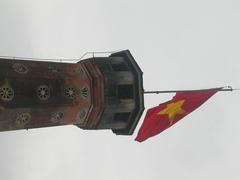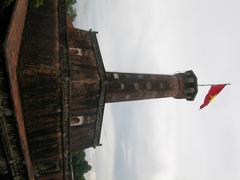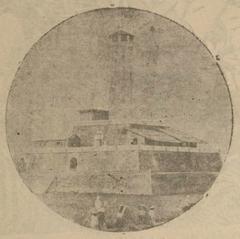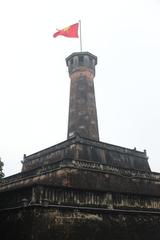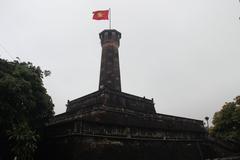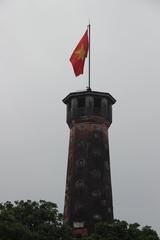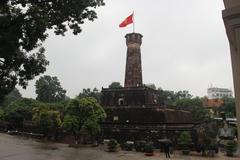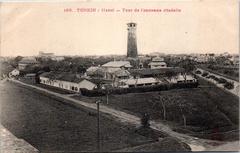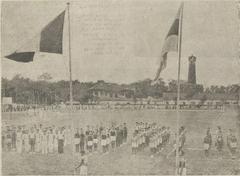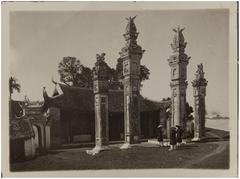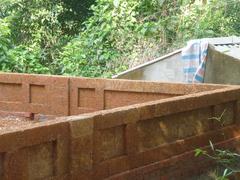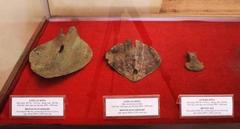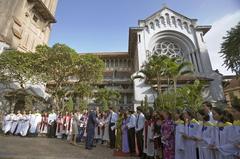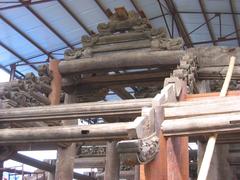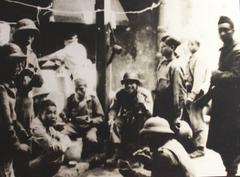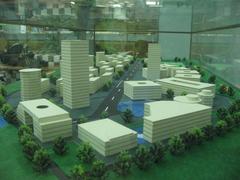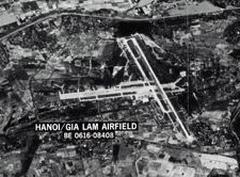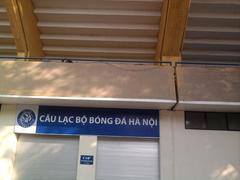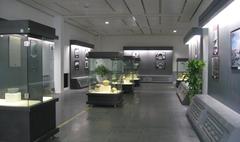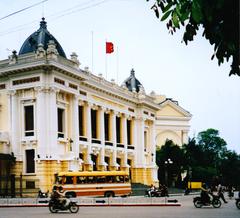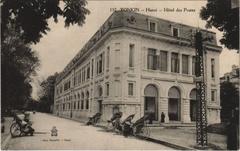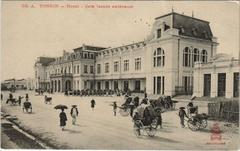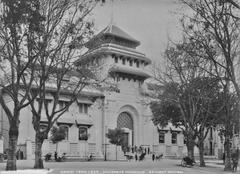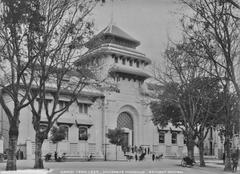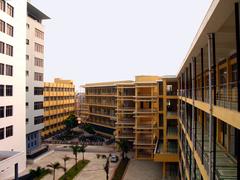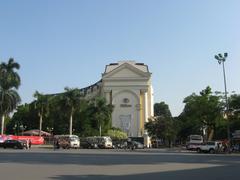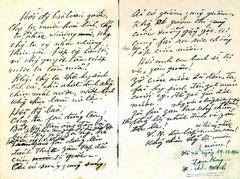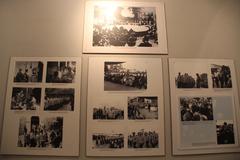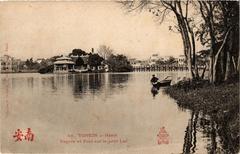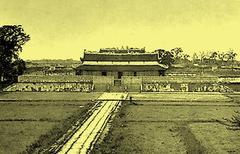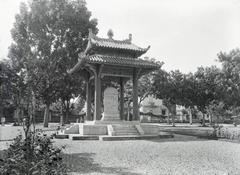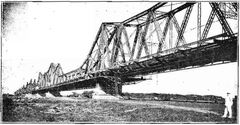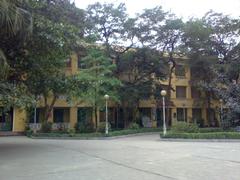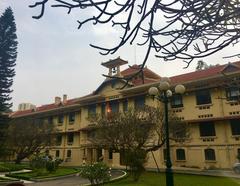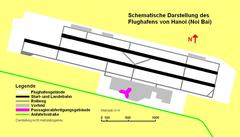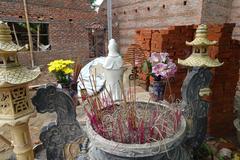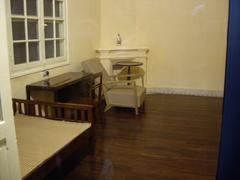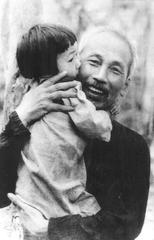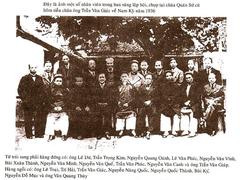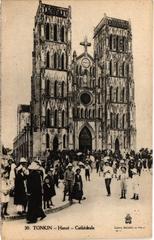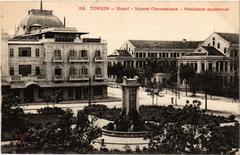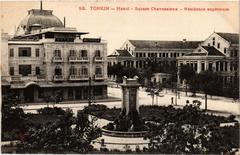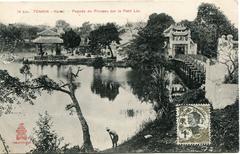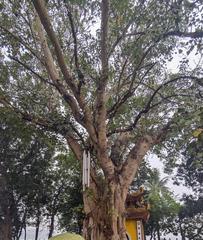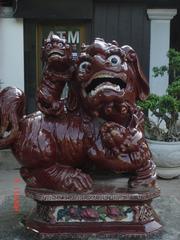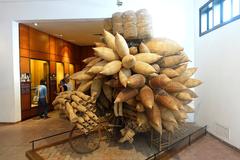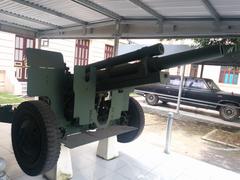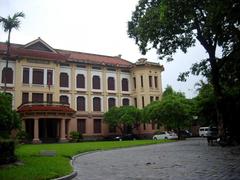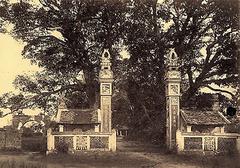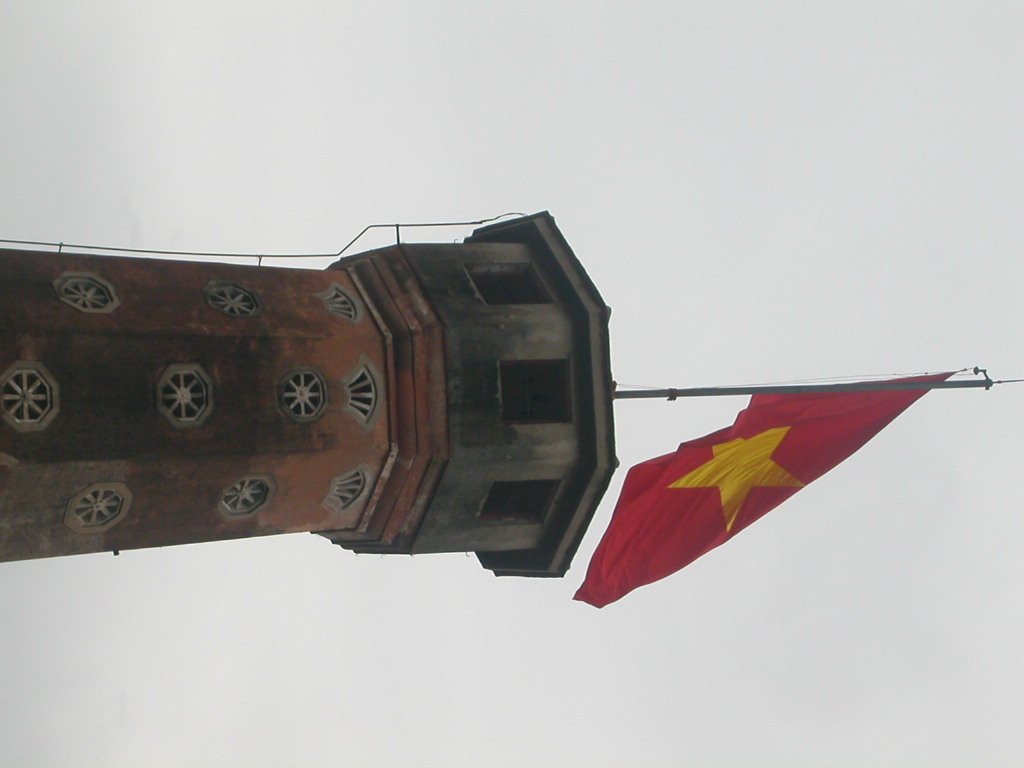
Flag Tower of Hanoi: Visiting Hours, Tickets, and Historical Significance
Date: 14/06/2025
Introduction
The Flag Tower of Hanoi (Cột cờ Hà Nội) is a defining symbol of Vietnam’s capital, renowned for its historical, cultural, and architectural significance. Constructed between 1805 and 1812 under Emperor Gia Long of the Nguyen Dynasty, it stands within the UNESCO-listed Thang Long Imperial Citadel, connecting visitors to over a thousand years of Vietnamese heritage (hoangthanhthanglong.vn). Its striking presence, with a total height of 41.4 meters including the flagpole, makes it one of Hanoi’s most recognized landmarks (wikipedia).
Throughout its existence, the Flag Tower has survived colonial occupation, wars, and the dramatic transformation of Vietnam from imperial capital to modern nation-state. Notably, it was the site of the first official raising of the Vietnamese national flag on October 10, 1954, symbolizing the city’s liberation from colonial rule (vietnamtraveldocs.com). Today, the tower continues to host the national flag, replaced every few weeks, reaffirming Vietnamese pride and endurance (hanoilocaltour.com).
This guide offers a detailed overview of the Flag Tower’s history, architectural features, visiting information, practical travel tips, and nearby attractions, ensuring an enriching and seamless visit for travelers and history enthusiasts.
Historical Background and Cultural Significance
Origins and Construction
Commissioned during the reign of Gia Long, the Flag Tower was built as part of the Thang Long Imperial Citadel’s southern axis. Its primary function was military—serving as an observation and signaling post (hoangthanhthanglong.vn). The design incorporates both traditional Vietnamese and Western influences, built primarily from brick and featuring a three-tiered square base supporting an octagonal shaft and observatory (wikipedia).
Survival Through Colonial and Wartime Eras
Remarkably, the Flag Tower was spared during the French colonial demolition of the citadel in the late 19th century due to its strategic value. The French army reused it as a military post, which contributed to its preservation (vietnamtourism.org.vn). The tower retained military significance throughout the Vietnam War, serving as an air defense observation point (hoangthanhthanglong.vn).
Emblem of National Identity
Beyond its military role, the tower is a powerful symbol of Vietnamese sovereignty. The raising of the national flag in 1954 marked the end of colonial rule and the beginning of a new era, witnessed by thousands in a jubilant celebration (vietnamtraveldocs.com). The tower often appears in Vietnamese art, currency, and public consciousness as a beacon of unity and resilience (VOV World).
Architectural Features
- Base and Structure: The tower comprises a three-tiered square base, each level smaller than the one below, ascending to an 18.2-meter octagonal column. This design enabled both stability and panoramic surveillance (wikipedia).
- Height: The structure stands 33.4 meters tall, reaching 41.4 meters with the flagpole, making it one of the tallest pre-modern structures in Hanoi.
- Observatory: The top observatory chamber has eight doors facing all directions, with poetic inscriptions: “Nghênh Húc” (Welcoming the Sunlight), “Hồi Quang” (Reflecting Light), and “Hướng Minh” (Directing Light) (vietnamonline.com).
- Ventilation and Light: The interior is illuminated and ventilated by dozens of fan- and flower-shaped windows, keeping it cool and dry even during Hanoi’s humid summers (hoangthanhthanglong.vn).
- Staircase: A spiral staircase of 54 steps (symbolizing Vietnam’s 54 ethnic groups) leads to the observatory (vietnamtourism.org.vn).
Visiting the Flag Tower of Hanoi
Location and Access
The Flag Tower is located at 28A Điện Biên Phủ Street, Ba Đình District, within the grounds of the Vietnam Military History Museum and the Thang Long Imperial Citadel (goviettrip.com). It is within walking distance of Hoàn Kiếm Lake, Ba Đình Square, and the Old Quarter, making it easily accessible for most travelers (vnitourist.com).
Getting There
- On Foot: 20-minute walk from the Old Quarter.
- By Bus: Served by routes 01, 18, 32, 34, and 45 (threeland.com).
- Taxi/Ride-hailing: Readily available throughout the city.
- Motorbike: Popular for flexibility (goviettrip.com).
Opening Hours
- Daily: 8:00 AM – 5:00 PM (goviettrip.com; threeland.com)
Admission Fees
- Adults: 20,000–40,000 VND (varies by ticket type and whether purchased as part of the Military History Museum package)
- Students/Children: 50% discount
- Tickets are sold at the museum entrance.
Note: As of January 2025, public access is generally limited to the base and exterior; the interior and upper levels are often closed for preservation (hoangthanhthanglong.vn).
What to Expect
Site Layout
- Base and Surroundings: Explore the three-tiered base and view the symbolic inscriptions. The grounds feature military artifacts and are part of the Vietnam Military History Museum (threeland.com).
- Observation Points: While the upper observatory is usually restricted, the base offers excellent views and photo opportunities.
Duration
- Flag Tower Only: 30 minutes–1 hour.
- Combined with Military History Museum: 2–3 hours (vietnamtravel.com).
Facilities and Amenities
- Rest Areas: Highland Coffee shop on-site for refreshments.
- Souvenir Shops: Near the entrance.
- Restrooms: Within the museum complex.
- Photography: Popular throughout the site. Early morning and late afternoon offer optimal lighting (vietnamtravel.com).
Practical Tips
Best Time to Visit
- Ideal Hours: 9:30–10:30 AM to avoid crowds and midday heat (vietnamtravel.com).
- Weather: Bring sun protection and water during hot months; an umbrella in rainy season.
Dress Code & Etiquette
- Attire: Modest, respectful clothing is encouraged (guidetohanoi.com).
- Behavior: Respect the monument and other visitors.
Accessibility
- Mobility: The base is accessible via wide steps; there are no elevators. Some areas may be challenging for those with limited mobility.
Nearby Attractions
- Vietnam Military History Museum: Adjacent to the tower.
- Thang Long Imperial Citadel: UNESCO World Heritage Site.
- Hoàn Kiếm Lake & Ngọc Sơn Temple: 20-minute walk.
- Ba Đình Square & Ho Chi Minh Mausoleum: Short drive away.
- Temple of Literature: Vietnam’s first university.
Frequently Asked Questions (FAQ)
Q: What are the Flag Tower’s visiting hours?
A: Open daily from 8:00 AM to 5:00 PM.
Q: How much is the ticket?
A: Tickets are 20,000–40,000 VND, with discounts for students/children.
Q: Is the site accessible for people with disabilities?
A: The base is accessible but some areas have steps and no elevators.
Q: Can I climb to the top of the tower?
A: Public access is currently limited to the base and exterior.
Q: Are guided tours available?
A: Yes, through the museum and local operators.
Visuals and Media
High-quality images of the Flag Tower exterior, inscriptions, and museum grounds enhance the visitor experience. Interactive maps and virtual tours are available on official sites.
Internal Links
Conclusion
The Flag Tower of Hanoi is more than a historic monument—it’s a living emblem of Vietnamese identity, resilience, and pride. Its central location, rich history, and proximity to other major attractions make it an essential stop for anyone visiting Hanoi. Respect the site’s heritage, plan your visit during recommended hours, and use official resources for the most up-to-date information.
For the best experience, consider guided tours, and don’t miss the opportunity for memorable photos with the iconic flag waving atop the tower. Download the Audiala app for real-time guides and exclusive content on Hanoi’s heritage sites.
Key Points and Final Tips
- Symbol of National Identity: Survived centuries of upheaval, now a beacon of unity (VOV World).
- Architectural Interest: Distinctive three-tiered base, octagonal observatory, poetic inscriptions.
- Visitor-Friendly: Central location, easy access, and educational context within the Military History Museum (hoangthanhthanglong.vn; goviettrip.com).
- Best Practices: Plan a visit during cooler months, consider joining a guided tour, and use official apps and websites for the latest updates (hanoilocaltour.com; vietnamtravel.com).
Sources and Official Links
- Flag Tower of Hanoi - Wikipedia, 2024
- Cột cờ Hà Nội - Thang Long Imperial Citadel, 2024
- Hanoi Flag Tower: Explore the Symbol of the Capital’s Military History, 2024
- Flag Tower of Hanoi - Symbol of Hanoi, 2024
- Hanoi Flag Tower - Vietnam Tourism, 2024
- Hanoi Flag Tower - Vietnam Online, 2024
- Flag Tower of Hanoi – A Historical Witness & Pride of the Capital, 2024
- Flag Tower of Hanoi Visitor Information - Goviettrip, 2024
- Hanoi Flag Tower Visiting Hours & Tickets - Vietnam Travel, 2024
